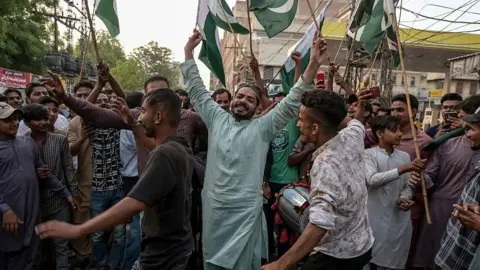India Pakistan Ceasefire Agreement: A New Era of Fragile Peace?
The longstanding disputes between India and Pakistan have repeatedly pushed South Asia to the brink of conflict. However, the recently forged India Pakistan ceasefire agreement marks a pivotal moment, aiming to cool tensions along the heavily militarized border. This article explores the backdrop, mediators, and implications of this latest truce.

The Road to the Ceasefire
Hostilities along the Line of Control (LoC) in Kashmir have often erupted into cross-border shelling, causing civilian and military casualties on both sides. The escalation reached a peak after a deadly militant attack in the Kashmir region, prompting India to respond with air strikes deep inside Pakistani territory. Subsequent days saw heavy artillery exchanges, aerial duels, and mutual accusations of aggression.
According to a BBC analysis, the sudden announcement of a ceasefire came after four tense days of clashes. While both nations agreed to halt hostilities, doubts lingered as accusations of minor violations surfaced within hours. The need for a sustainable ceasefire has never been more urgent.
Who Brokered the Deal?
Unlike previous agreements, this ceasefire involved multiple diplomatic channels. US President Donald Trump played a public role by urging both sides to accept a truce. Behind the scenes, US and other international efforts exerted pressure on India and Pakistan to step back from the brink.
Notably, US Secretary of State Marco Rubio reached out to the Pakistani military leadership, which is believed by analysts to have been a turning point. Regional players like Saudi Arabia and Turkey also contributed to facilitating dialogue. For a more in-depth look at the diplomatic dynamics, Deccan Herald's editorial discusses ongoing questions regarding the real brokers behind this fragile peace.
Key Features of the Latest Ceasefire Agreement
The new India Pakistan ceasefire agreement called for a "full and immediate" end to cross-border firing. It emphasizes restraint, regular communication between military officials, and efforts to prevent misunderstandings. However, ongoing mistrust means the situation remains highly sensitive.
Security analysts highlight the involvement of the US, UK, and Gulf countries in pushing the ceasefire. The agreement also grants both sides a framework to de-escalate without appearing weak domestically. Still, as some observers note, the truce was forged rapidly amid high tension, leaving many of its terms open to interpretation.
Challenges Ahead for Lasting Peace
While the ceasefire offers temporary relief, its long-term success depends on consistent enforcement and political will. As reported by Reuters, diplomatic ambitions in the region will be tested as both countries navigate domestic pressures and external influences.
Fragile peace in South Asia requires not just military restraint but also sincere dialogue on deeper issues like Kashmir. Misunderstandings or isolated incidents could quickly unravel the calm, as history has frequently shown.
Conclusion: Hope, but Cautious Optimism
The latest India Pakistan ceasefire agreement is an important step towards peace, but its true test lies in implementation. As backchannels remain active and world powers continue to mediate, people across both nations hope for a future without violence. Only time will tell if this truce marks a genuine new era, or simply another pause in a cycle of conflict.